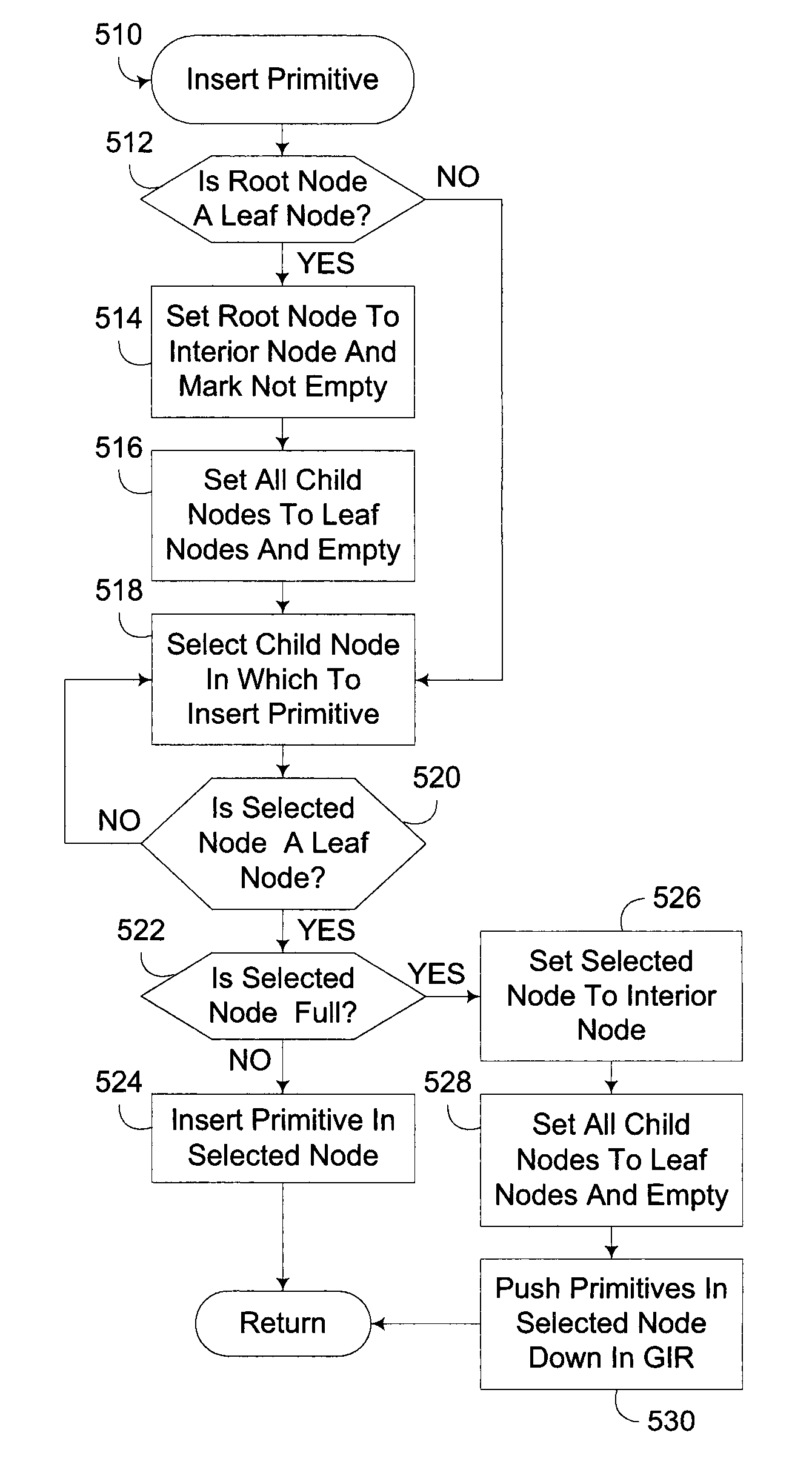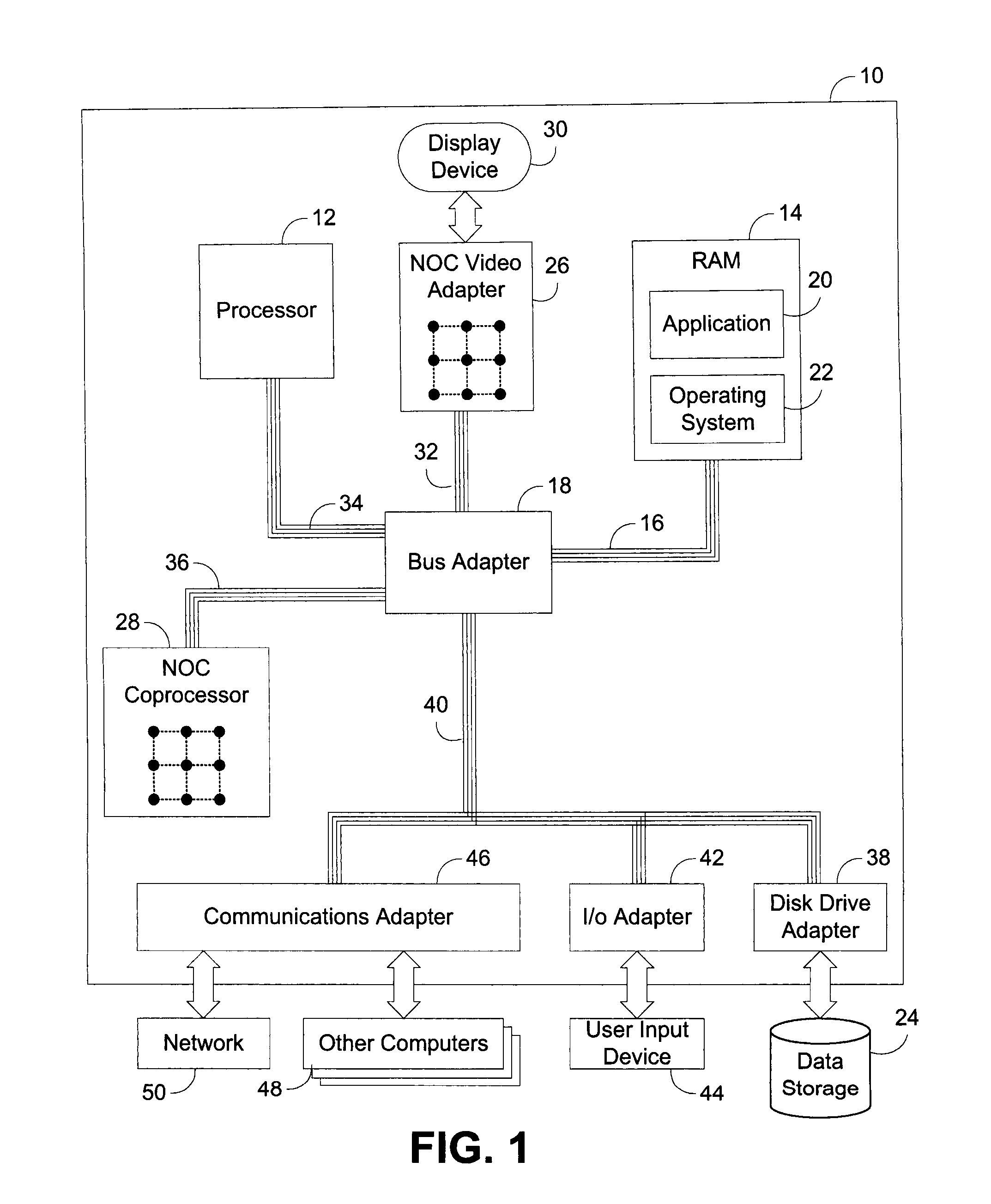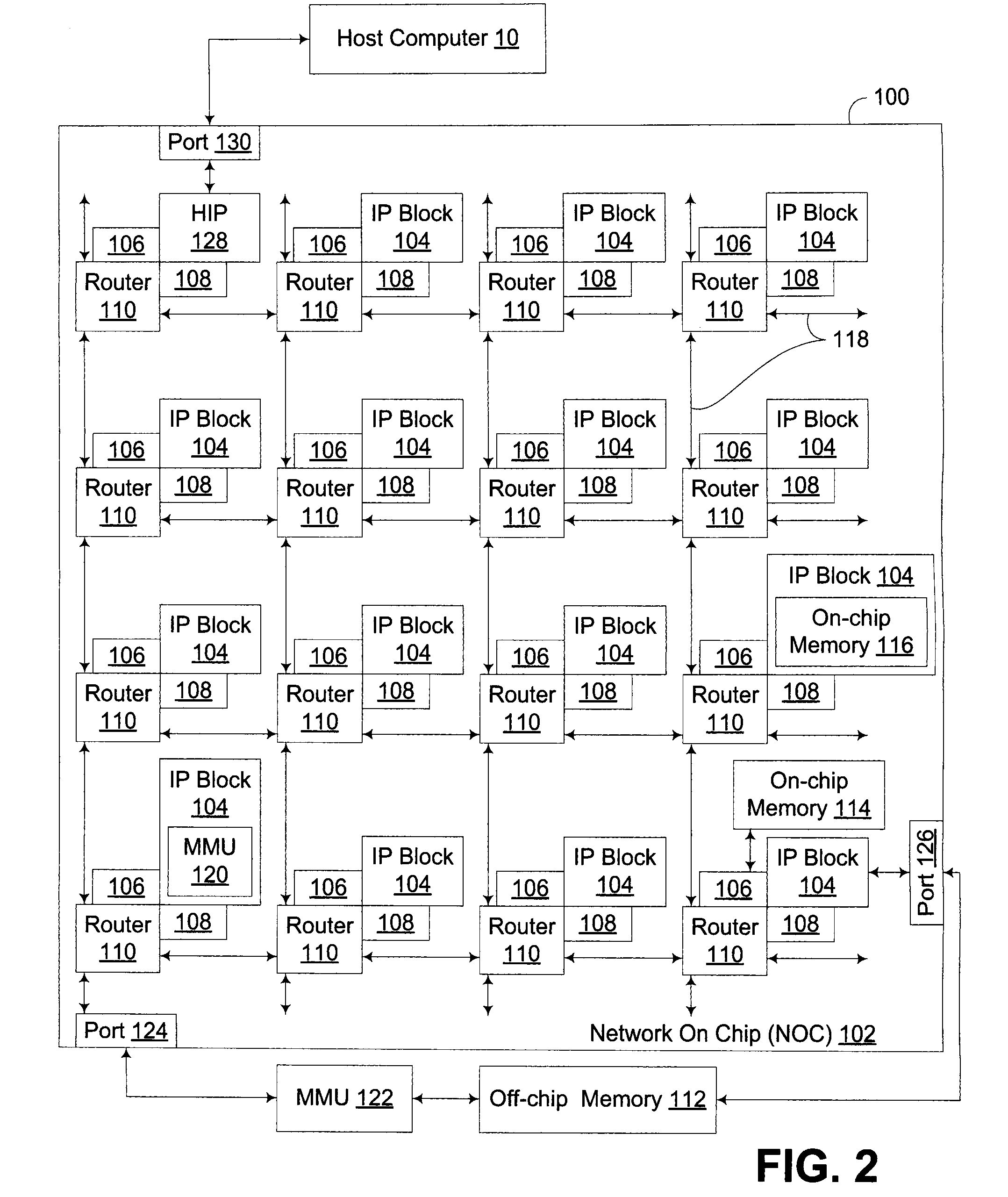Resetting of Dynamically Grown Accelerated Data Structure
- Summary
- Abstract
- Description
- Claims
- Application Information
AI Technical Summary
Benefits of technology
Problems solved by technology
Method used
Image
Examples
Embodiment Construction
[0045]Embodiments consistent with the invention utilize a dynamic accelerated data structure (ADS) generator that implements a low-overhead reset of an ADS to reduce the overhead associated with initializing or resetting an ADS used in image processing. The dynamic ADS generator may reset an ADS by reusing the root node of a prior ADS and resetting at least one node in the prior ADS to break a link between the reset node and a linked-to node in the prior ADS. A linked-to node in this context is a node that is the target of a link in a parent node in an ADS, and in general, breaking the link to a linked-to node is typically implemented by either removing the link to the linked-to node in the linking node or otherwise reconfiguring the linking node to disable the link to the linked-to node. In the illustrated embodiment, for example, the link to a linked-to node is broken by reconfiguring the linking node from a root or interior node to a leaf node.
[0046]As will become more apparent b...
PUM
 Login to View More
Login to View More Abstract
Description
Claims
Application Information
 Login to View More
Login to View More - R&D
- Intellectual Property
- Life Sciences
- Materials
- Tech Scout
- Unparalleled Data Quality
- Higher Quality Content
- 60% Fewer Hallucinations
Browse by: Latest US Patents, China's latest patents, Technical Efficacy Thesaurus, Application Domain, Technology Topic, Popular Technical Reports.
© 2025 PatSnap. All rights reserved.Legal|Privacy policy|Modern Slavery Act Transparency Statement|Sitemap|About US| Contact US: help@patsnap.com



